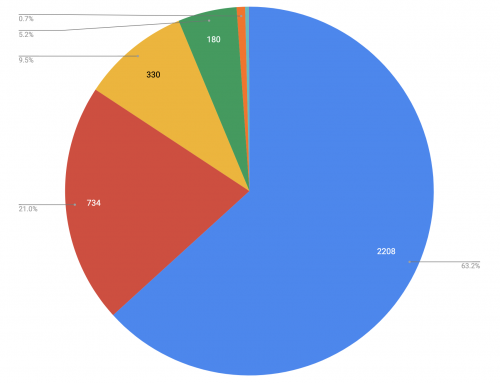The Difference between Emotional and Rational Objections
When a prospect calls your office seeking information about how you can help them, they will either book an appointment, or delay booking an appointment. If a prospect calls you, there is a very high likelihood that they want to book an appointment with someone. In a recent analysis of 267 recorded calls over a 3 month period, we noted 196 calls in which there was no objection raised at all (73%).
In this sample, there were only 3 objections for every 10 calls. You can be sure that not every call where a prospect raises an objection is successfully converted into an appointment.
Handling objections is a difficult aspect of enquiry telephone call handling; perhaps even the most challenging. It is, however, an enquiry call handler’s job to turn a caller’s interest into action, even when there might be an objection standing in the way of that action.
The first step in handling objections is to know the difference between questions, objections and smokescreens. Then, once the you have clarified the objection for what it is, you must decide whether it’s an emotional or rational objection.
What’s the difference?
An emotional objection can be translated like this: “I don’t want to do something (e.g. make an appointment, make a commitment, purchase something) right now.”
and
A rational objection can be translated like this: “I don’t want to do something (e.g. make an appointment, make a commitment, purchase something) with you.”
There’s a big difference between the two statements and it is highlighted in the bolded words.
It’s unlikely that the prospect will be this direct with you, especially when they believe the 2nd statement. However, certain clues will reveal which of the above types of objections you are dealing with:
Examples of emotional objections
-
“It’s too expensive”
-
“I’m too scared”
-
“I’m too busy”
-
“I need to talk to (a third-party)”
Examples of rational objections
-
“I can find more quality elsewhere”
-
“I can find more expertise elsewhere”
-
“I can find more convenience elsewhere”
-
“I can find a less expensive price elsewhere”
-
“I can find more value elsewhere”
-
“I can find a better product elsewhere”
Again, the main difference with the objections above are is where the objection is rooted.
Emotional objections are rooted in a lack of emotional urgency. The pain of living with the problem is clearly not sufficiently greater than the pain of making the commitment. The call handler’s job in this case is to create more emotional urgency. This is considerably more effective if it’s done during the entire call, not only at the end when the prospect is already shutting down options.
Rational objections on the other hand, are rooted in a rational preference of one option (“elsewhere”) over you. In this case, the prospect isn’t yet clear on how your option fulfills their priorities and criteria as it relates to their buying decision. The call handler’s job in this case is to make these relationships more clear by helping the prospect see how their priorities and criteria align better with your option, than that of a competitor. Similarly, after the objection is raised is typically too late to begin asking the prospect about what is important to them when making a purchase decision.
In my next post, I’ll share some information about what can be done earlier in the call in order to prepare oneself to handle these objections before they occur, and quite possibly, to reduce their chance of occurring altogether.







[…] this information in hand, the salesperson is then able to decide whether my objection is emotional or rational. When they know that, they need to handle my emotional objections by balancing my obstacle with my […]